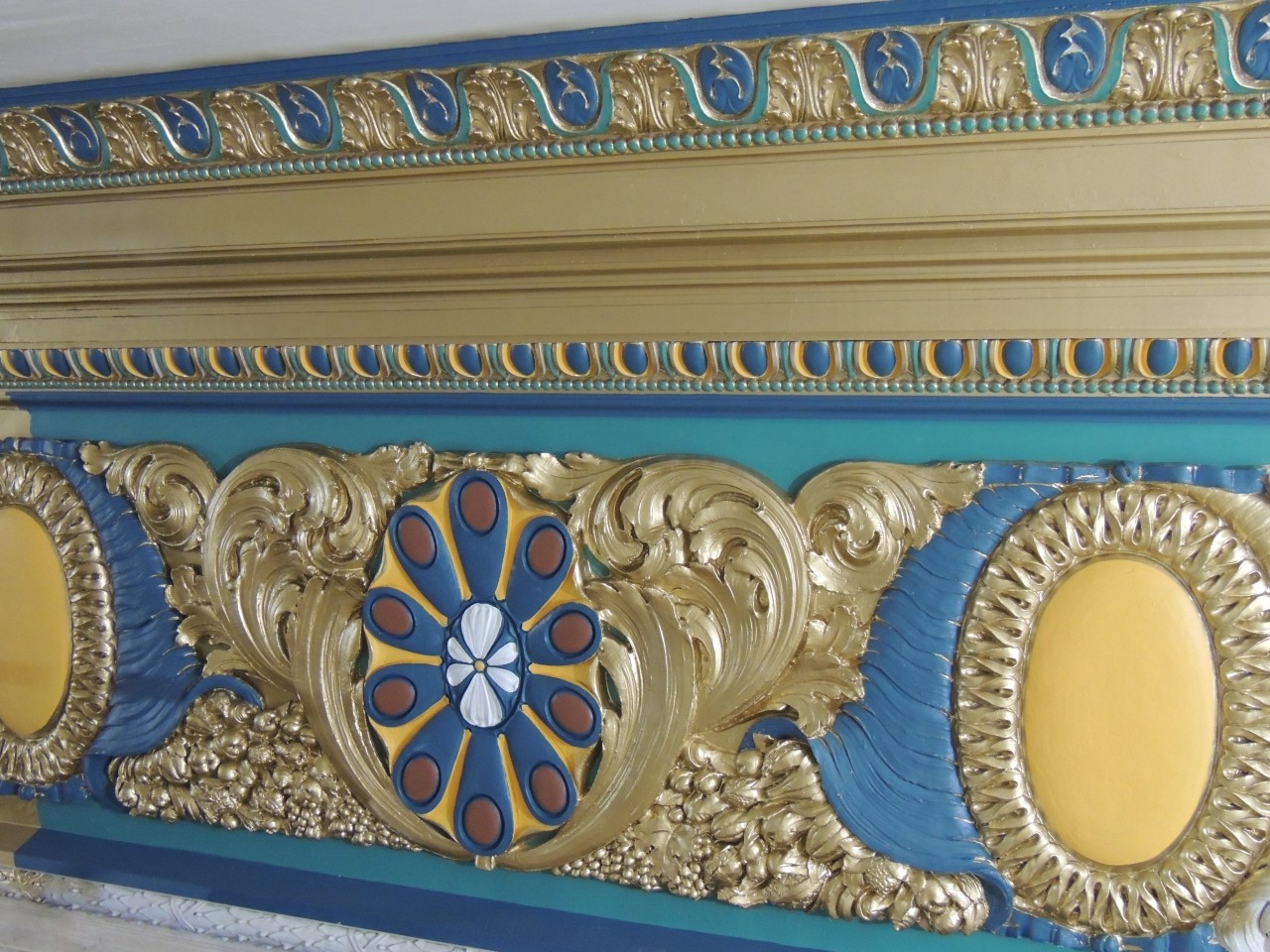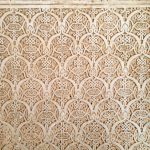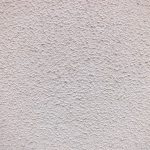
Pros & Cons of Plaster Walls: Benefits & Disadvantages of Plaster St. Louis
Plastering is a time-tested wall covering technique that has been used for centuries. It involves applying a mixture of sand, water, and lime (or other materials) to create a smooth and even surface on walls and ceilings. While there are many different types of plaster available today, traditional plaster remains one of the most popular choices due to its durability and longevity.
One of the primary benefits of plastering is that it provides an excellent surface for painting. Because the plaster creates a smooth and even finish, there is no need for additional preparation work before painting. This can save both time and money in the long run.
Another benefit of plastering is that it can help to reinforce surfaces and prevent cracking over time. When metal lath is incorporated into the plastering application, it helps to provide additional support and stability to the surface. This can be particularly important in areas where walls or ceilings may be subject to movement or vibration.
In addition to its practical benefits, plastering can also be an aesthetic choice for homeowners or business owners looking for a unique finish. There are many different textures and finishes available with traditional plaster, from smooth and polished to rough or textured. This allows individuals to customize their space according to their preferences.
Finally, choosing traditional plaster as a wall covering material can save money in the long run by providing a durable finish that requires less maintenance than other options such as wallpaper or paint. With proper care and maintenance, traditional plaster can last for decades without needing any major repairs or replacements.
Tips for Preventing Cracks in Your Home During Construction
As a homeowner, you want your house to be sturdy and long-lasting. However, cracks can appear on the walls or floors of your home if proper care is not taken during construction. These cracks can be unsightly and may even lead to structural damage over time. In this section, we will discuss some tips for preventing cracks in your home during construction.
Use High-Quality Materials During Construction
One of the most important things you can do to prevent cracks in your home is to use high-quality materials during construction. This includes everything from the foundation to the roof. Using substandard materials may save you money in the short term, but it will cost you more in repairs and maintenance later on.
Ensure Proper Mixing of Plastering Materials
Plastering is an essential part of construction that requires attention to detail. To prevent cracking, it’s crucial to ensure that plastering materials are mixed correctly. This means following manufacturer instructions and using the right proportions of water and plaster.
Apply Plaster in Thin Layers to Avoid Cracking
Another tip for preventing cracks in your home is to apply plaster in thin layers. Thick layers of plaster are more likely to crack as they dry because they shrink as they lose moisture. Applying thin layers allows each layer to dry completely before applying another one.
Allow Each Layer of Plaster to Dry Completely Before Applying the Next
It’s essential not only to apply thin layers but also allow each layer of plaster to dry completely before applying another one. Rushing through this process can lead to uneven drying and increased risk of cracking.
Use Mesh or Fiber Reinforcement in Areas Prone To Cracking
Mesh or fiber reinforcement can be used in areas prone to cracking, such as corners or around doors and windows. These reinforcements help distribute stress evenly across a larger area, reducing the likelihood of cracking.

Monitor Humidity Levels During Construction To Prevent Excessive Drying or Moisture Retention
Humidity levels during construction can affect the drying process of plastering materials. High humidity can slow down the drying process, while low humidity can cause excessive drying. Monitoring and controlling humidity levels can help prevent cracking.
Home Hacks for Preventing Cracks in Your Home During Construction
In addition to the tips mentioned above, there are some home hacks you can use to prevent cracks in your home during construction. These include:
Why Apply Veneer Plaster over Drywall?
Veneer plaster is a popular choice for homeowners and contractors alike making it an ideal option for those who want a more polished look. But that’s not the only benefit of veneer plaster over drywall.
Durability and Resistance
One of the most significant advantages of veneer plaster over drywall is its durability and resistance to cracks. Drywall can be easily damaged by moisture or impact, leading to unsightly cracks and holes in the wall. Veneer plaster, on the other hand, is much more durable and resistant to these types of damages.
Soundproofing and Insulation
Another benefit of applying veneer plaster over drywall is improved soundproofing and insulation. The additional layer helps to reduce noise transmission between rooms, creating a quieter living space. Additionally, veneer plaster has insulating properties that can help keep your home warmer in the winter and cooler in the summer.
Reduced Weight on Walls
Traditional plaster can be quite heavy, which can put a strain on walls if applied too thickly. However, veneer plaster can be applied in thinner layers than traditional plaster, reducing the weight on the wall while still providing all of the benefits of traditional plaster.
Design Options
Veneer plaster provides more design options than plain drywall. It can be tinted or colored to match any decor style or color scheme you have in mind. This means you don’t have to settle for plain white walls; instead, you can create a unique look that reflects your personal style.
High-Gloss Finish
Finally, one advantage of veneer plaster over drywall is its ability to be sanded and polished to achieve a high-gloss finish. This creates an elegant look that adds sophistication to any room in your home.
The Advantages and Disadvantages of Plaster Walls
Advantages and Disadvantages of Plaster Walls
Plaster walls have been used for centuries as a popular choice for interior wall finishing. They are made by applying a mixture of gypsum, lime, sand, and water to a lath or masonry surface. In this section, we will discuss the advantages and disadvantages of plaster walls.
Advantages
Plaster walls are known for their durability. They can last for decades without needing repair or replacement. This is because plaster is a very hard material that can withstand wear and tear over time. It is also resistant to scratches and dents, making it an ideal choice for high-traffic areas such as hallways or living rooms.
Another advantage of plaster walls is that they are fire-resistant. Plaster has a high resistance to heat and can help slow down the spread of flames in case of a fire. This makes it an excellent choice for commercial buildings where fire safety is a top priority.
In addition to its durability and fire-resistance, plaster walls have a smooth and seamless finish that can add a touch of elegance to any room. The smooth surface creates an even reflection of light which enhances the overall appearance of the space.
Disadvantages
Despite its many advantages, there are some downsides to using plaster walls. One disadvantage is that they can be more expensive to install compared to other wall materials such as drywall. This is because plaster requires more labor-intensive installation techniques such as troweling and smoothing out the surface.
Another disadvantage of plaster walls is that they can be more difficult to repair if they get damaged or cracked. Unlike drywall which can easily be patched up with spackle or joint compound, repairing plaster requires specialized skills and tools.
Furthermore, moisture can be detrimental to plaster walls since it causes them to weaken over time. If there’s too much moisture in the air due to poor ventilation or leaks from pipes behind the wall, then mold growth can occur. This can lead to health problems and costly repairs.
Importance of Proper Plastering for Any Job Size
Proper Plastering Ensures a Smooth and Even Wall Finish
Proper plastering is crucial for achieving a smooth and even surface. Without it, the walls can appear uneven and bumpy, which can be unsightly and affect the overall aesthetic appeal of the room or building.
One of the main benefits of proper plastering is that it creates a level surface that is free from bumps and lumps. This is especially important if you plan on painting or wallpapering the walls because any imperfections will be noticeable once the finish has been applied.
Proper Plastering Helps to Prevent Cracks and Other Damages to the Wall Surface
Another benefit of proper plastering is that it helps to prevent cracks and other damages to the wall surface. When walls are not properly plastered, they are more susceptible to damage from moisture, temperature changes, and general wear and tear.
Cracks in walls can be unsightly, but they can also lead to bigger problems down the line. Moisture can seep into these cracks, causing mold growth or structural damage over time. By ensuring that your walls are properly plastered, you can help prevent these issues from occurring.
Good Plastering Provides a Strong Base for Paint or Wallpaper Application
As mentioned earlier, good plastering provides a smooth and even surface for paint or wallpaper application. But it’s not just about appearance; proper plastering also provides a strong base for these finishes.
If your walls are not properly prepared before applying paint or wallpaper, you may find that they don’t adhere well or start peeling after some time. Properly plastered walls provide an ideal base for these finishes to stick to, ensuring that they last longer without any issues.
It Improves the Overall Aesthetic Appeal of the Room or Building
Properly plastered walls not only provide functional benefits but also improve the overall aesthetic appeal of a room or building. Smooth and even walls create a polished and professional look that can make any space feel more inviting.
Whether you’re renovating a home or designing a commercial space, the appearance of the walls is an important aspect to consider. Proper plastering can help elevate the overall design and make your space stand out.
Proper Plastering Can Also Enhance Insulation and Soundproofing Properties of Walls
In addition to improving the appearance of walls, proper plastering can also enhance their insulation and soundproofing properties. When walls are properly plastered, they create a tighter seal that helps prevent heat loss or gain through the wall.
This means that your home or building will be more energy-efficient, which can lead to cost savings on heating and cooling bills. Additionally, properly plastered walls can help reduce noise transmission between rooms or from outside sources.
It Is Essential for Ensuring the Longevity and Durability of the Wall Structure
Finally, proper plastering is essential for ensuring the longevity and durability of the wall structure. When walls are not properly prepared before finishing, they may deteriorate faster over time due to moisture damage or other issues.
By investing in proper plastering techniques upfront, you can ensure that your walls will last longer without needing costly repairs down the line. This is especially important for commercial buildings or homes that see heavy foot traffic or wear and tear.
The Benefits of Cleanliness and Speed during Plaster Installation
Cleanliness and Speed: The Key Benefits of Plaster Installation
Plaster installation is an essential aspect of any construction project, and it requires a lot of attention to detail. The process involves applying plaster to walls, ceilings, and other surfaces to create a smooth and even finish. However, the benefits of cleanliness and speed during plaster installation are often overlooked. In this section, we will explore how these two factors can significantly impact the quality of the finished product.
Cleanliness during plaster installation ensures a healthier and safer environment for both workers and occupants. When working with plaster, dust particles can become airborne, posing a risk to respiratory health. By maintaining a clean work area throughout the installation process, workers can minimize exposure to these particles. Additionally, keeping the worksite clean reduces the risk of accidents caused by tripping or slipping on debris.
A clean plastering job also reduces the need for additional cleaning or repairs after the project is completed. Any leftover debris or dust particles from poor cleanup can cause damage to surrounding surfaces over time. This could lead to costly repairs in the future that could have been avoided with proper cleaning procedures during installation.
The use of modern plastering techniques and tools can significantly speed up the installation process, saving time and money. For example, using spray equipment instead of traditional trowels allows for faster coverage while maintaining consistent thickness throughout the surface being covered. Modern tools also allow for more precise application techniques that reduce waste and increase efficiency.
Faster plaster installation means less disruption to daily activities in the building being worked on as well. Construction projects often cause significant disruptions to businesses or residents occupying nearby buildings due to noise levels or blocked access points. By completing installations quickly without sacrificing quality standards, contractors can minimize disruptions while still delivering exceptional results.
The use of high-quality plaster materials can improve overall durability and longevity of the finished product as well. Higher quality materials are less likely to crack or chip over time compared to cheaper alternatives. This means less maintenance and repair work in the future, saving time and money for building owners.
A speedy and clean plaster installation can lead to increased customer satisfaction and positive word-of-mouth referrals. Satisfied customers are more likely to recommend a contractor’s services to others, leading to more business opportunities in the future. Positive reviews also help build a contractor’s reputation as reliable and efficient, making them more attractive to potential clients.
Plastering Drywall: Cost Comparison and Benefits
Cost Comparison: Plastering vs. Repairing Drywall
While drywall is a popular choice for interior walls due to its affordability and ease of installation, it can be prone to damage and requires frequent repairs or replacement. On the other hand, plastering drywall can provide a more durable and long-lasting solution, reducing the need for costly repairs over time.
It’s important to consider both short-term and long-term expenses. Initially, repairing damaged drywall may seem like the cheaper option compared to plastering. However, if the damage is extensive or occurs frequently, the costs can add up quickly.
In contrast, plastered walls are less likely to sustain damage in the first place due to their added durability. This means that while plastering may require a higher upfront cost than simply repairing damaged drywall, it can save money in the long run by reducing repair and replacement expenses.
Benefits of Plastering Drywall
Aside from cost savings over time, there are several benefits of plastering drywall that make it a worthwhile investment for property owners.
Improved Appearance: Plastered walls have a smoother finish compared to traditional drywalls which often have visible seams or bumps. This creates a more aesthetically pleasing appearance that can improve the overall value of a home or building.

Soundproofing: Plastered walls also offer better soundproofing capabilities than traditional drywalls due to their denser composition. This makes them ideal for homes located near busy roads or noisy neighbors.
Fire Resistance: Plastered walls are more fire-resistant than traditional drywalls due to their composition which includes materials such as lime and gypsum. This makes them an ideal choice for buildings with strict fire safety regulations.
Eco-Friendly Option: Plaster is made from natural materials such as limestone and gypsum which makes it an eco-friendly option compared to traditional drywalls that contain synthetic materials.
Cons of Plaster Walls: Poor Wifi Signals and Difficulty Hanging Things
Plaster walls have been used for centuries due to their durability, soundproofing qualities, and elegant appearance. However, there are some downsides to having plaster walls in your home that you should be aware of before making a decision. In this section, we will discuss the cons of plaster walls, including poor wifi signals and difficulty hanging things.
Plaster Walls Require Regular Maintenance
Plaster walls require regular maintenance to keep them looking good over time. They are prone to cracking due to changes in temperature and humidity levels within your home.
If left untreated, these cracks can worsen over time and lead to larger structural issues with your walls. To prevent this from happening, it’s important to inspect your plaster walls regularly and repair any cracks or damage as soon as possible.
Repairing Plaster Walls Can Be Expensive and Time-Consuming
If your plaster walls do become damaged, repairing them can be expensive and time-consuming. Unlike drywall, which can be easily patched with joint compound, repairing plaster requires a more specialized approach.
To repair a plaster wall, you will need to remove the damaged area of the wall, apply new plaster, and then sand and paint the surface to match the surrounding area. This process can take several days to complete and may require professional assistance if the damage is extensive.

Understanding the Costs Involved in Repairing Plaster
Repairing plaster can be an excellent way to remodel a room without having to tear down and rebuild walls. It’s a cost-effective solution that can give your home a fresh new look without breaking the bank. However, it’s important to understand the costs involved in repairing plaster before you start any work.
The extent of damage is one of the most significant factors that determine the cost of repairing plaster. Minor cracks and holes are less expensive to fix than major structural issues. For instance, small cracks may only require filling with spackling paste or joint compound, which is relatively inexpensive. On the other hand, large cracks or holes may need more extensive repairs such as replacing entire sections of plaster.
DIY repairs may be possible for small areas of damage, but larger repairs should be left to professional plasterers to ensure a high-quality finish. DIY enthusiasts often underestimate the complexity of plaster repair work and end up causing more damage than good. Professional plasterers have years of experience and training, making them better equipped to handle complex repairs.
In addition to material costs and labor charges, accessibility and complexity can also impact the overall cost of repairing plaster. If your walls are difficult to access or if there are intricate designs on them, this will increase both time and labor costs.
It’s essential to address any plaster damage as soon as possible because leaving it untreated can lead to further deterioration and potentially more expensive repairs in the future. Ignoring minor cracks or holes today could result in costly structural problems tomorrow.
When deciding whether or not to tackle repairs yourself or hire a professional, you need first to assess your skills level realistically. If you’re confident about your DIY skills but unsure about how much work needs doing, consider hiring a professional for an initial consultation. They’ll provide expert advice on what needs fixing and how much it will cost.
If you decide that hiring a professional is too costly, you can still save money by doing some of the work yourself. For example, you could remove any loose plaster or debris before the plasterer arrives, reducing their labor time and overall costs.
There are several options available. Traditional lime-based plasters are generally more expensive than modern alternatives such as gypsum plaster. However, they’re also more durable and longer-lasting.
The Overall Advantages of Plastering for Your Home
In conclusion, the overall advantages of plastering for your own home are numerous. Plaster walls offer durability and strength that drywall simply cannot match. Proper plastering techniques ensure that your walls will remain crack-free for years to come, saving you time and money on repairs.
Applying veneer plaster over drywall is a great way to achieve the look of traditional plaster without sacrificing convenience or affordability. It also provides added protection against moisture and mold, making it an ideal choice for bathrooms and other high-humidity areas.
While there are some disadvantages to plaster walls, such as poor wifi signals and difficulty hanging things, these can be easily mitigated with proper planning and installation. And understanding the costs involved is key to ensuring that you get the best value for your money.

